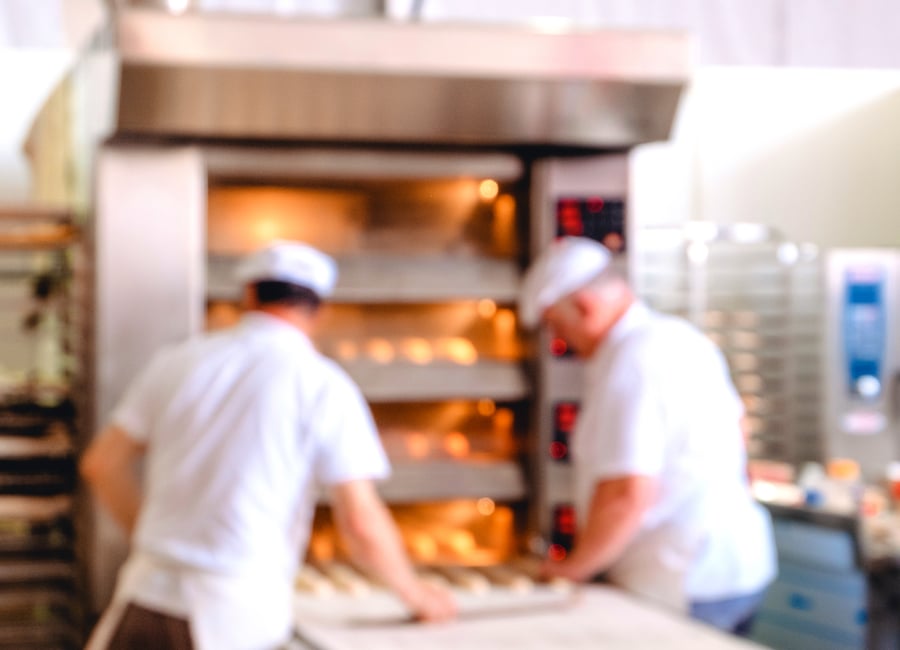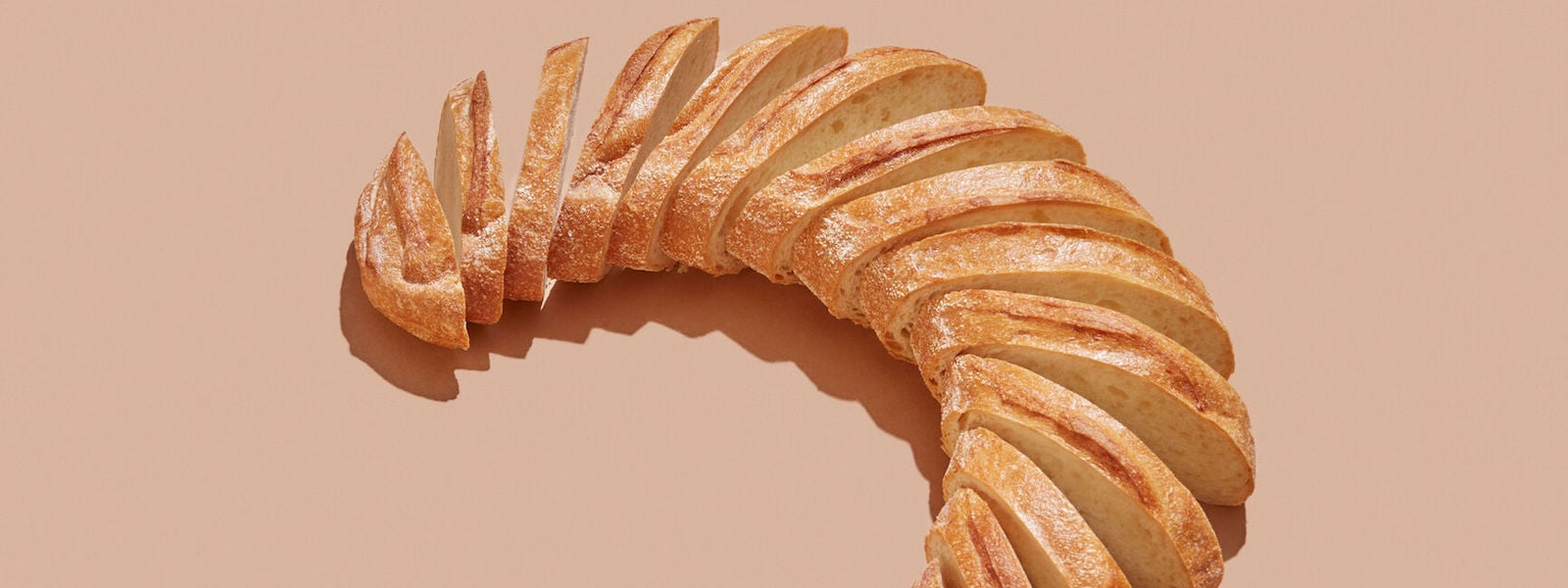The bakery industry is creaking under the continuous structural change that is taking place. New economic conditions, competition from food retailers and changing consumer habits are some of the reasons for this. How can bakeries take advantage of this structural change? Which consumer trends determine the market, and what opportunities are there today that could benefit the future of the bakery industry?
The Status Quo in the Baking Industry
According to the German Society for Consumer Research (GfK), 1,681,000 metric tons of bread were bought in Germany in 2018; and the trend is rising. However, despite consumption growing, the number of artisan bakeries is falling: the country had 55,000 bakeries in the 1950s, compared to just under 11,000 businesses with a total of around 35,000 branches today.
The fact is that in the baking trade, cutthroat competition has been taking place for quite some time. While existing large businesses are becoming larger and larger, the number of small businesses continues to decline. There are a lot of bankruptcies occurring. In addition, the number of bakery shops, bakery kiosks and gas stations with prebaked goods (more precisely, dough blanks, which are frozen goods that are baked on-site) are rising. In addition, the establishment of baking stations in food retailing as a much-used new form of distribution is exacerbating prices through cost decreases and quality competition between large bakeries, branch bakeries and small artisan bakeries.
Modernized companies benefit from the takeover of sales and production facilities. This expansion of baking capacities has already taken place in recent years and has resulted in a high concentration among large bakeries. The market is dominated by a small number of industrial bakery producers who primarily supply the food retail trade and discounters with fresh, packaged bakery products.
Counteract or keep up? In the areas of purchasing, materials, production, and logistics, there are many tried-and-true levers.
Changing Consumer Habits as an Opportunity
If you buy bread regularly (on average, there are 44.5 bread purchases per person and year in Germany), you too can actively shape the future of the bakery trade. Where you prefer to buy bread and which types of bread you buy play a big role.
When it comes to taste, aroma, and consistency, consumers report same-tasting breads with an identical consistency and aroma – completely independent of geography. Prof. Hans Hauner, an expert in nutrition, also explains this in a Welt newspaper interview: “[Just a] few companies in Germany supply up to 90 percent of bakeries with baking mixes.” Even discounters also purchase some of their products from the same producers.
How can bakeries adapt their business model to changing consumer behavior? Those who adapt to, anticipate, and respond to changes in consumer behavior better than their competitors have always had more success in economic history.
RECOMMENDATIONS FOR BAKERIES FOR TAKING ACTION
 Investments in Modern Technology
Investments in Modern Technology
The economic conditions require a minimum of technical support from all company sizes. Should implementation fail due to succession problems or a lack of equity capital, individual companies are in danger of being forced out of the market.
Investment in modern technology is the central issue in the bakery industry: companies that do not invest in modern production facilities and continue to work with old machines risk major breakdowns. The resulting investment backlog can often no longer be made up for. Alternative investment strategies, such as the leasing of production facilities, can help here. In addition, the experienced businessperson will also investigate the used-machinery market.
Specialization
Bakeries do not have to compete with supermarket prices. If they offer a small yet high-quality selection of bread made from regional, organic raw materials, the comparatively higher price of the goods is considered justified; in fact, consumers are also usually willing to pay more for it. Bakeries may specialize by considering, amongst other things, the following consumer trends:
Turning to Original Grain Varieties and Wholegrain Bread
The undisputed rule is: The healthiest bread is wholegrain. In addition, products from original grains such as spelt, emmer, einkorn, millet, and Khorasan wheat have attracted more attention among nutrition-conscious consumers in recent years. Compared to wheat, these cereals are richer in protein and minerals, which also makes them popular with vegetarians and vegans.
Low-Carb Breads and a Variety of Flours
Protein breads (low-carb breads) have also become popular. They contain a lot of vegetable protein, including lupines, soy, and linseed. New types of flour – such as almond, rice, and coconut – are also entering the market.
Gluten and Other Intolerances
In 2016, a study carried out by the University of Hohenheim explained that intolerances are not triggered by wheat itself but rather by the method of processing. Thus, a slower dough preparation time and longer fermentation time increase the degree of digestibility of a loaf of bread. Artisan bakeries can score points here. In mass production, the time factor is either not considered or only taken into account to a limited extent. In addition, baking mixes are often artificially enriched with enzymes, additives, and other propellants – all of which can trigger intolerances.
Opening Hours
The extended opening hours of food retailers mainly affect traditional handicraft and branch bakeries. Whereas supermarkets stay open later during the week, branch bakeries and artisan bakeries cannot keep up here. However, holidays and weekends are the days with the highest turnover for many companies.
Here, bakeries benefit from a nationally valid judgment of the German Federal Court of Justice (Az. I ZR 44/19), which states that bakeries with a café and seating possibilities may also sell their goods outside of the prescribed opening times.
 Modern Payment Models
Modern Payment Models
“No card payments possible” – this restriction can also lead to consumers preferring to go to the supermarket instead of shopping in artisan bakeries. It also makes sense for bakeries to incorporate modern payment methods (including Apple or Google Pay) into their business models in the future.
Out-of-Home Catering and the Coffee Detail
In summary, companies that have adapted their product portfolio to the needs of their customers will win. This also includes a high-quality out-of-home catering service and quality coffee. If companies on top guarantee a high-quality “coffee experience,” they will stand out notably from the competition and help to ensure customer satisfaction. If they rely on high-quality products that are prepared on-site in a visually appealing and fresh way, they will be able to survive in the future and grow successfully. A glance at modern food retailing is all it takes to adapt details from these concepts.
Timing, Sales Drive, and Creativity
Many companies only feel alarmed and seek expert advice when they experience their first slumps in sales, when goods are complained about, or after competitors set up in the neighborhood. Our experience as management consultants shows that the right timing, a strong will to implement changes, and a level of creativity are required in order to survive in the market and continue to grow.
Our task is to consistently think ahead with your business model and implement it in a result-oriented manner. Which current challenges can we support you in? Which individual topics and opportunities would you like to think through in a joint discussion with us? We look forward to hearing from you.


